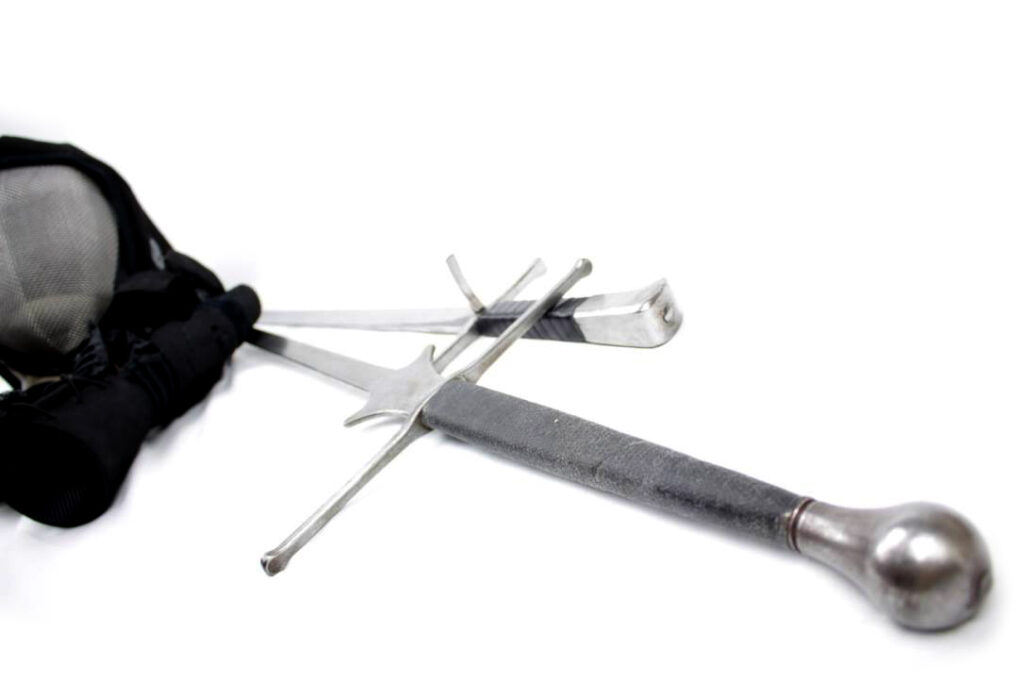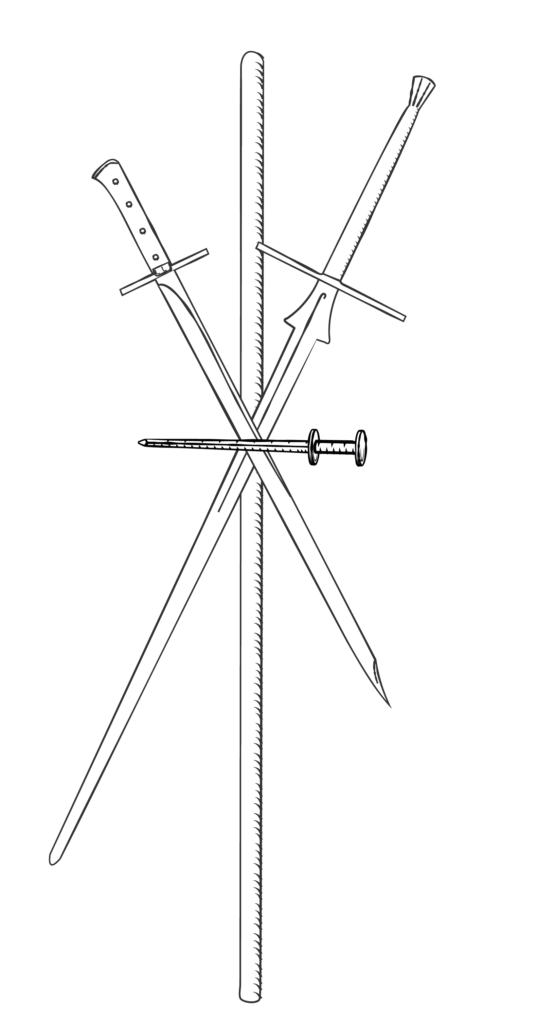All classes at Medieval Combat Group consist of fighting techniques drawn from historical fencing manuscripts transcribed and translated by the wider global HEMA community. At Medieval Combat Group we focus on a set of 15th century manuscripts by various fencing masters associated with the teachings of fencing master Johannes Liechtenauer. These mostly deal with the longsword, but also cover the messer, staff, dagger, unarmed wrestling (ringen), sword and buckler, and other elements. Here we focus mainly on the longsword and the messer. Almost all of these teachings describe unarmoured fencing techniques, so we train with modern protective equipment to provide a good level of protection whilst trying to minimise the encumberance and keep levels of mobility as close to unarmoured movement as possible.

The Weapons

Longsword
The longsword was the first weapon taught at Medieval Combat Group. This is the archetypal ‘knightly’ two-handed sword. If you’ve watched Lord of the Rings, Game of Thrones, watched/played The Witcher, or anything similar, you’ll have seen something fairly close to a longsword being waved around. These have a double-edged blade of around 90-100cm, and a hilt of around 25-30cm, and are generally used in two hands. Hollywood has a bad habit of showing these as being heavy and awkward to use, but the average longsword weighed maybe 1.5kg to 1.8kg, lighter than most average laptops, and the two-handed grip gives a lot of agility and control to the weapon.
Langesmesser
The langesmesser, or messer, is a short singled-edged sword, that isn’t far off what you’d get if you stretched a Bowie knife or hunting knife to the size of a small sword. In fact, one of the descendants of the messer in later centuries was called a hunting sword. The average fencing messer has a blade of around 60-70cm, single edged, sometimes slightly curved. The grip can be quite long, even though the weapon is used in a single hand, with the length of the grip used for various hooking and trapping movements.
Staff
The staff is occasionally taught at Medieval Combat Group as a supplement to the longsword and messer, as many of the principles carry across. The staff is a straight wooden stick, usually 6 or 7ft or more in length, and often used in the historical sources as a foundation for spear and polearm techniques.
Dagger
The rondel dagger is also occasionally taught at Medieval Combat Group. This is a common medieval dagger, with a small round guard and pommel and a straight blade better suited to stabbing than cutting.
Sword and Buckler
Our medieval sources also include a relatively small set of techniques discussing the use of the buckler (a small centre-gripped shield about the size of a small dinner plate) alongside a single handed sword. As these techniques share all of the principles of longsword and messer fencing, we teach this occasionally in our messer classes as messer and buckler to give a different perspective on these principles.
